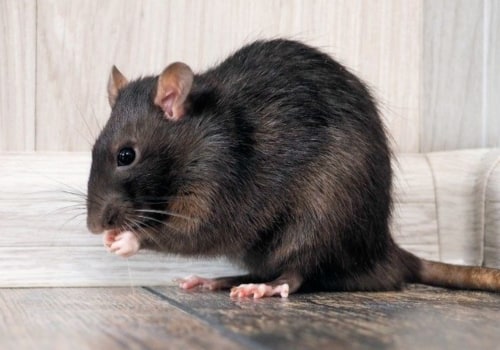Catching is the safest and most effective method of controlling rats in and around homes, garages, and other structures. Because traps can be used over and over again, catching is less expensive than poison baits, but requires more labor. The best way to prevent rodent infestation and contact with rodents is to remove food sources, water, and items that provide shelter for rodents. Some consider mechanical traps to be more humane than rodenticides.
Taken together, these mechanical methods cannot discriminate between target and non-target organisms (Lorvelec and Pascal, 200), thus posing problems similar to the use of toxic chemicals. Do not vacuum or sweep rodent urine, rodent droppings, or contaminated surfaces that have not been disinfected. Cholecalciferol kills anticoagulant-resistant rodents and there is no problem of secondary poisoning of pets or wild animals that eat poisoned rodents. The goal is to maximize the number of rodents caught and minimize the number of escapes that can make rodents increasingly cautious.
Garbage disposal should be regular and frequent enough to prevent rodents from relying on garbage containers as a source of food. Replacing a municipality's garbage bins with “rodent-proof” bins should be part of the city's rodent management plan, especially in areas where rodents are a recurring problem. Agencies such as the Department of Public Health and the University Extension Service can provide information and expertise on rodents and rodent control. When rodent activity is high, building construction must take into account rodent jumping and climbing abilities.
Other signs include burrows, nests, bites, food debris, rat hair, urine stains, rodent noises, insects associated with rodents, urine odors, or dead rodents. Considerations include rodent acceptance and resistance of rodenticide, the amount needed to kill a rodent (single or multiple feeding), bait toxicity and potential for secondary poisoning, and the potential for food contamination and poisoning non-target organisms, including humans. As the rodent population grows and resettles, people are more likely to be exposed to rodent-borne diseases. A typical large city in the United States receives more than 10,000 complaints about rodent problems annually and performs tens of thousands of rodent control inspections and bait services.
This includes knowledge of rodent biology, IPM practices, rodent control devices, and the characteristics and risks associated with rodenticides. Signs that rodents are present in addition to seeing the living or dead are rodent droppings, runways, rubbing marks and footprints.




